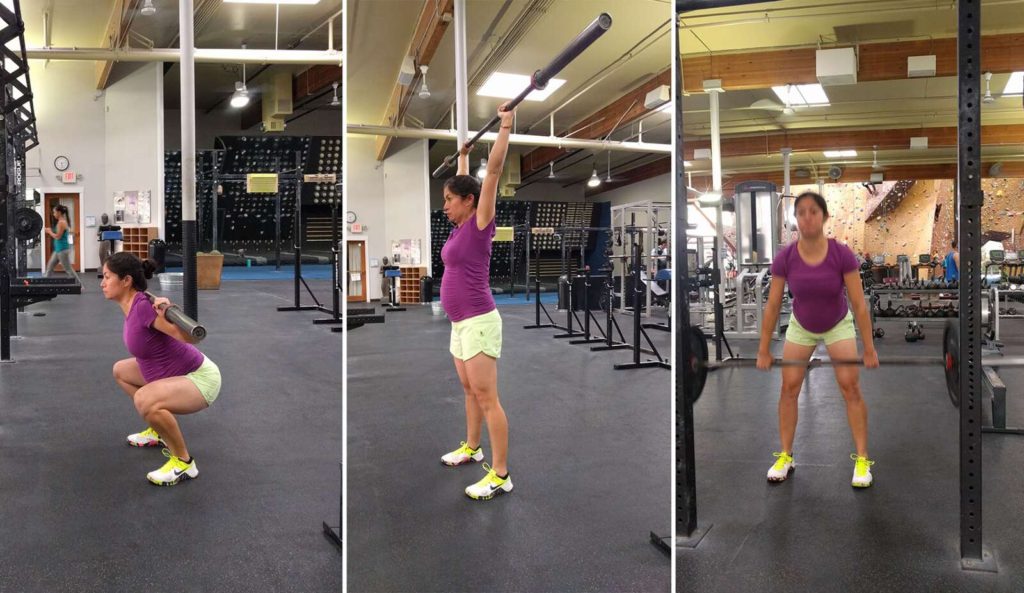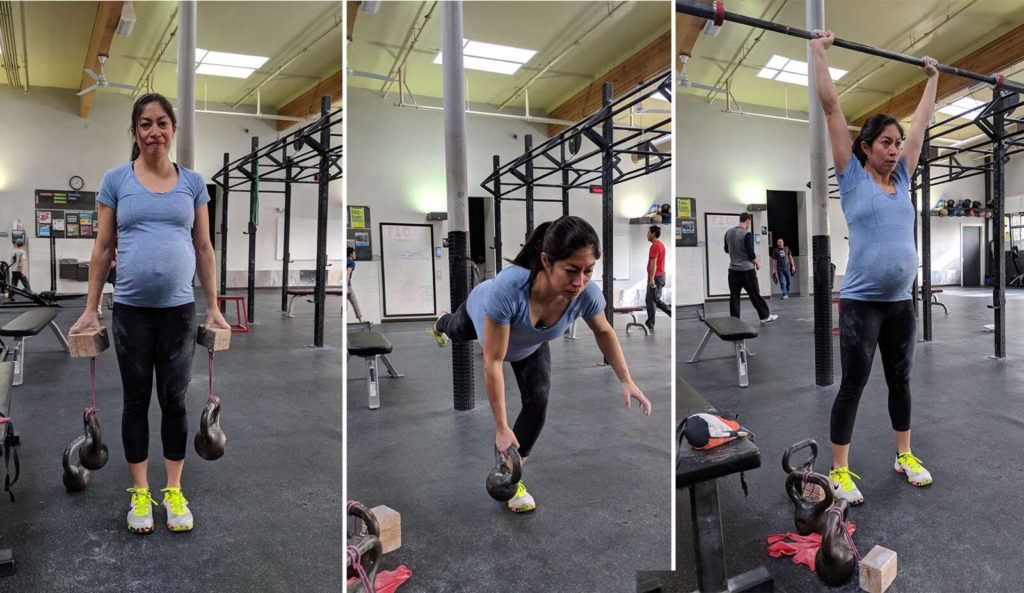What you’ll learn
For someone who regularly exercises as recreational or competitive athlete, the recommendation “30min of moderate exercise at least 3x/week, like walking… increases your energy, promotes muscle tone, reduces backaches,” is common sense. I wanted pregnancy and health data from women who trained at 80%+ max capacity, 3x or more a week.
I went on a mission: (1) gather all the data I could from studies of women in my exercise demographic, and (2) understand the physiology of pregnancy itself.
By understanding the biology of pregnancy–the development of the placenta, growth of a fetus, and maternal body–you can adapt your exercise regime to fit your lifestyle.


The data sources
I wanted hard data from women who were considered athletes, training at a high intensity level. The literature I did find (references at bottom) included women who:
- Were considered recreational or competitive athletes, training regularly before pregnancy
- Continued exercising throughout pregnancy, at 5x+/week for ~40min at 65-90% max intensity (intensity dropped closer to due date)
- Continued exercising regularly past 38 weeks gestation
- Were rock climbers
Many quoted pregnancy-exercise studies take women who didn’t exercise before pregnancy, and began exercise regimes during pregnancy, leading, in my opinion, to the myths that high intensity workouts are detrimental to the fetus (e.g. don’t lift more than 15lb, don’t let your heartrate get over 140, don’t exercise on your back). Indeed, the biological effects of those who start a new exercise program during pregnancy are very different from those who are conditioned before pregnancy.
The stats
In the high-intensity pregnancy exercise groups, as compared to the non-exercise groups, there were:
- 1/3 the rate of gestational diabetes
- 2/3 the rate of preeclampsia (high blood pressure leading to very serious complications)
- 1/4 the rate of low back pain
- 1/3 the rate of requesting pain relief (e.g. epidural) during labor
- 1/4 the rate of artificially inducing labor
- 1/2 the rate of abnormal fetal heartrate during labor
- 1/4 the rate of intervention (e.g. forceps, c-section) during labor
- 2/3 length of labor (65% delivered in 4hrs vs 31%)
- rate of umbilical cord tangling significantly decreased (if exercise continued into last 2 weeks of pregnancy)
- 10% leaner babies by fat only (all organs, total length, head circumference, bone/mineral density normal)
- 4/5 the rate of postpartum depression
Cardiac system adaptations
Immediately after an egg implants in your uterus, your circulatory system begins transforming, becoming more elastic. Veins and arteries dilate to prepare for needing more blood volume to support another human. The increase in available volume precedes the actual increase in blood volume, meaning in the 1st trimester, common symptoms are fatigue, low blood pressure, racing heartbeat.
At first, your blood volume increases in liquid plasma only, your body retaining more water, resulting in needing to pee more due to your kidneys filtering more liquid. By the 2nd trimester, your total blood volume is increased by 50%, and the number of red blood cells eventually catches up. Most women are slightly anemic in the 2nd trimester due to the rapid production of red blood cells. You gain on average 4lb from extra blood volume alone!
Improvements with intense exercise (noting the minimum threshold #2 above): 2x total stroke volume (max amount of blood the heart pushes each beat), 10-15% more blood volume over and above the baseline 50% increase, higher fetal heart rate variability (HRV), which is good. High HRV is a sign your body can adapt to physical stresses. Fetuses that handle the strain of labor well have higher HRV.
Placenta adaptations
The placenta starts developing immediately after implantation. Its main function is to supply oxygen and nutrients to the fetus. Until the end of the 1st trimester, when the placenta is fully developed, your hormones will be skyrocketing to support the fetus, which partially contributes to morning sickness.
Mother’s placenta grows 1/3 faster, remains 1/3 larger, and has 15% more blood vessels supplying the fetus when she exercises during pregnancy.
This sets up the fetus to withstand the stresses of a workout regime, daily stresses, and of course, labor. This only occurs if you exercise throughout the development of the placenta in the 1st trimester. And if you exercise throughout the 1st and 2nd trimesters, and stop in the 3rd trimester, fetuses came out fatter, since your system has become so efficient.
Respiratory system adaptations
A pregnant woman increases oxygen intake by 40-50% each breath! Your body’s sensitivity to the O2-CO2 differential increases thanks to progesterone. The net result is a perceived greater pressure gradient in lungs, which increases your body’s O2 intake. This also contributes to the side effect of feeling breathless, even though you’re actually intaking more O2.
This greater volume of oxygen (VO2 max), combined with the circulatory and placenta changes when exercising regularly throughout pregnancy, produces a really resilient system. Even 1 year after pregnancy, the net effect is still 10% greater max aerobic capacity, enough to compare post-pregnancy performance to blood doping.
Metabolic efficiency
In the 3rd trimester, when the fetus is rapidly gaining mass, it prefers sugars as opposed to fat as its primary energy source. To ensure enough sugars are saved for your baby, your maternal body changes from preferring burning sugars first to burning fat first, leaving reserves of sugars for the fetus.
Yup, this is what happens to diabetics. In the 3rd trimester, women’s bodies become mildly diabetic, with increasing insulin resistance to stop burning sugars. 8% of American women are diagnosed with gestational diabetes.
However, with regular exercise (pregnancy or not), you become more efficient at burning fat versus burning sugars. Intense exercise while pregnant combats gestational diabetes, 1/3 the rate of non-excercising pregnant women.
My experience
I exercised “intensely,” rock climbing and weightlifting, until 2 days before delivery. I had very few pregnancy symptoms to complain about, my son did phenomenally well through labor, and he’s a very healthy baby!

The caveats
As stated in Data Sources, these results are from women who exercised regularly before pregnancy, continued 5x/wk throughout pregnancy at 65-90% (intensity only dropped close to due date). Starting exercising during pregnancy didn’t result in all of these benefits.
*I’m not an expert and have no medical degrees. I’m a very interested person in my own body, researching, and providing that information to others.
Online Resources
- Climbing, Exercise and Pregnancy: A Reality Check
- Rock climbing survey of 350 women
- Aerobic exercise during pregnancy influences fetal cardiac autonomic control of heart rate and heart rate variability
- When Mom Exercises in Pregnancy, Her Baby’s Heart Benefits
- Exercise and Depression in Pregnancy and Beyond
- Science of Mom: How Fit Is Your Fetus? Exercise During Pregnancy and Fetal Heart Rate
Books
These were worth the time to read. There’s a more complete list in my Books Actually Worth Your Time to Read article.
→ Explore more articles in Pregnancy & Kids


